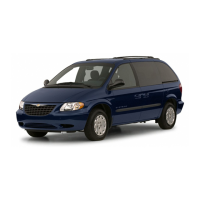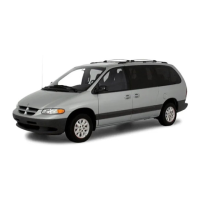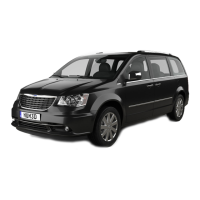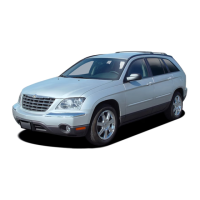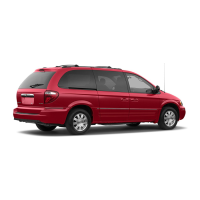Towing With HSA
HSA will also provide assistance to mitigate roll back
while towing a trailer.
WARNING!
•
If you use a trailer brake controller with your trailer,
the trailer brakes may be activated and deacti-
vated with the brake switch. If so, there may not be
enough brake pressure to hold both the vehicle
and the trailer on a hill when the brake pedal is
released. In order to avoid rolling down an incline
while resuming acceleration, manually activate the
trailer brake or apply more vehicle brake pressure
prior to releasing the brake pedal.
•
HSA is not a parking brake. Always apply the park-
ing brake fully when exiting your vehicle. Also, be
certain to place the transmission in PARK.
•
Failure to follow these warnings can result in a col-
lision or serious personal injury.
Ready Alert Braking (RAB)
RAB may reduce the time required to reach full braking
during emergency braking situations. It anticipates
when an emergency braking situation may occur by
monitoring how fast the throttle is released by the
driver. The Electronic Brake Control (EBC) system will
prepare the brake system for a panic stop.
Rain Brake Support (RBS)
RBS may improve braking performance in wet conditions.
It will periodically apply a small amount of brake pressure
to remove any water buildup on the front brake rotors. It
functions when the windshield wipers are in LO or HI
speed. When RBS is active, there is no notification to the
driver and no driver interaction is required.
Traction Control System (TCS)
The TCS monitors the amount of wheel spin of each of
the driven wheels. If wheel spin is detected, the TCS
may apply brake pressure to the spinning wheel(s)
and/or reduce vehicle power to provide enhanced
acceleration and stability. A feature of the TCS, Brake
Limited Differential (BLD) functions similarly to a limited
slip differential and controls the wheel spin across a
driven axle. If one wheel on a driven axle is spinning
faster than the other, the system will apply the brake of
the spinning wheel. This will allow more vehicle torque
to be applied to the wheel that is not spinning. BLD may
remain enabled even if TCS and the Electronic Stability
Control (ESC) are in reduced modes.
Trailer Sway Control (TSC)
TSC uses sensors in the vehicle to recognize an exces-
sively swaying trailer and will take the appropriate
actions to attempt to stop the sway. Note that TSC can-
not stop all trailers from swaying. Always use caution
when towing a trailer and follow the trailer tongue
weight recommendations
page 91.
When TSC is functioning, the ESC Activation/
Malfunction Indicator Light will flash, the engine power
may be reduced and you may feel the brakes being
applied to individual wheels to attempt to stop the
trailer from swaying. TSC is disabled when the ESC sys-
tem is in the “Partial Off” mode.
WARNING!
If TSC activates while driving, slow the vehicle down,
stop at the nearest safe location, and adjust the
trailer load to eliminate trailer sway.
AUXILIARY DRIVING SYSTEMS
BLIND SPOT MONITORING (BSM) —
IF EQUIPPED
The BSM system uses two radar sensors, located inside
the rear fascia/bumper, to detect highway licensable
vehicles (automobiles, trucks, motorcycles, etc.) that
enter the blind spot zones from the rear/front/side of
the vehicle.
When the vehicle is started, the BSM Warning Light will
momentarily illuminate in both outside rearview mirrors
to let the driver know that the system is operational.
The BSM system sensors operate when the vehicle is in
any forward gear and enters standby mode when the
vehicle is in PARK (P).
Rear Detection Zones
SAFETY 121
6
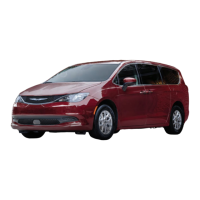
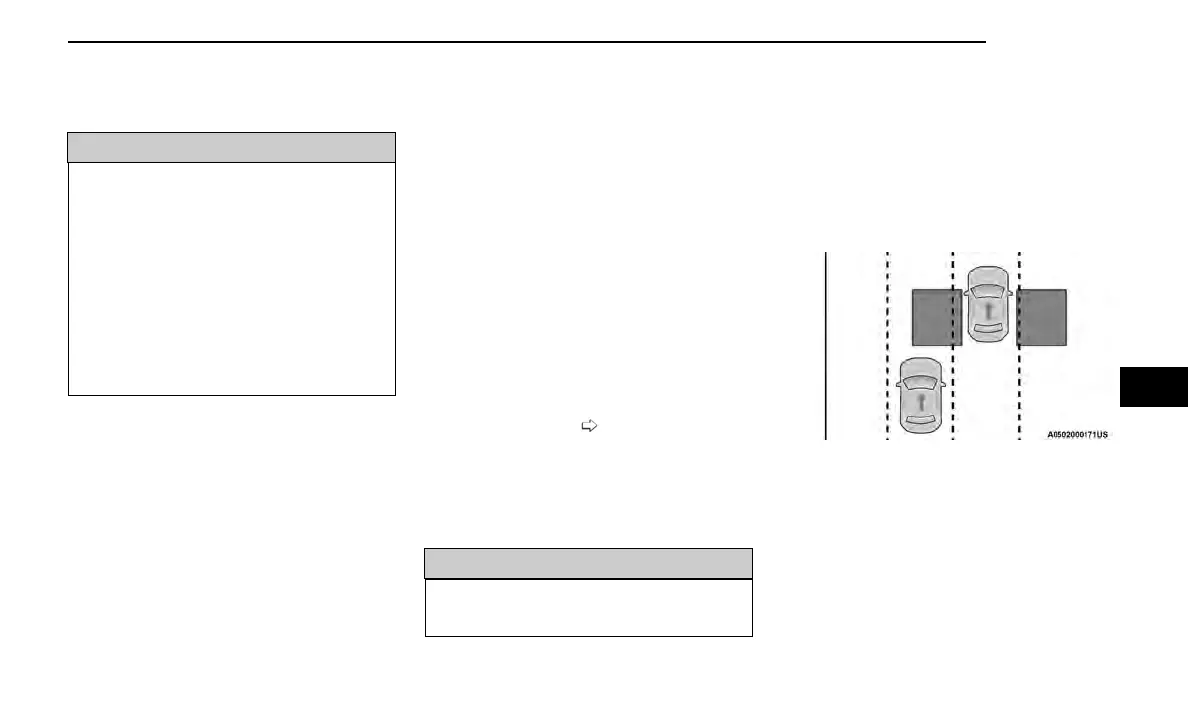